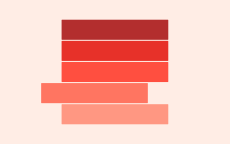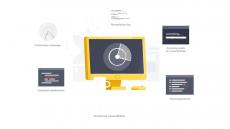- February 2025 (1)
- January 2025 (5)
- December 2024 (1)
- November 2024 (1)
- October 2024 (2)
- July 2024 (2)
- June 2024 (1)
- April 2024 (1)
- March 2024 (2)
- February 2024 (1)
- January 2024 (2)
- December 2023 (4)
- November 2023 (1)
- October 2023 (3)
- September 2023 (3)
- August 2023 (1)
- July 2023 (3)
- June 2023 (1)
- May 2023 (2)
- April 2023 (6)
- March 2023 (4)
- February 2023 (1)
- January 2023 (4)
- December 2022 (2)
- November 2022 (2)
- October 2022 (5)
- September 2022 (3)
- August 2022 (3)
- July 2022 (4)
- June 2022 (6)
- May 2022 (9)
- April 2022 (3)
- March 2022 (6)
- February 2022 (2)
- January 2022 (2)
- December 2021 (5)
- November 2021 (4)
- October 2021 (4)
- September 2021 (5)
- August 2021 (6)
- July 2021 (3)
- June 2021 (2)
- May 2021 (4)
- April 2021 (4)
- March 2021 (3)
- February 2021 (5)
- January 2021 (6)
- December 2020 (9)
- November 2020 (6)
- October 2020 (2)
- September 2020 (3)
- August 2020 (4)
- July 2020 (7)
- June 2020 (2)
- May 2020 (3)
- April 2020 (2)
- March 2020 (2)
- February 2020 (4)
- January 2020 (2)
- December 2019 (1)
- November 2019 (3)
- October 2019 (5)
- September 2019 (2)
- August 2019 (2)
- July 2019 (6)
- June 2019 (1)
- May 2019 (5)
- April 2019 (5)
- March 2019 (9)
- February 2019 (6)
- January 2019 (7)
- December 2018 (6)
- November 2018 (5)
- October 2018 (1)
- September 2018 (3)
- August 2018 (1)
- July 2018 (1)
- June 2018 (2)
Detectify is a web security scanner that performs fully automated tests to identify security issues on your website. It tests your website for over 1000 vulnerabilities, including OWASP Top 10, and can be used on both staging and production environments. Detectify’s simple to use interface, integrations with popular developer tools, team functionality, and informative reports simplify security and allow you to integrate it into your workflow.
We work with some of the best white hat hackers in the world through our Detectify Crowdsource platform and our internal security research team to continually build more security tests into our tool. We now scan for over 1000+ known vulnerabilities.
What makes us unique:
- White hat hackers: Detectify was built by renowned white hat hackers, who have legally hacked companies like Google, Facebook and PayPal. In 2016, we launched Detectify Crowdsource, a global network of 150+ handpicked ethical hackers that continously report their latest findings to us. In the last year, we received 450+ submissions that generated nearly 40 000 findings amongst our users.
- Usability: The Detectify experience is designed to be easy, fun and accessible. The goal to simplify security has shaped Detectify’s UI, making it both intuitive and easily adjusted to your needs. This is why Detectify seamlessly integrates into the development process and offers integrations with all popular developer tools.
- Educational: Detectify offers team functionality so that users can easily share reports within their team and/or with clients. Most findings have links to resources where you can read up on the vulnerability and learn how to fix it. You will have access to more than 100 guides, attack demo videos, quizzes etc, which will quickly increase the security awareness in your organisation.
Go Hack Yourself or someone else will.





















